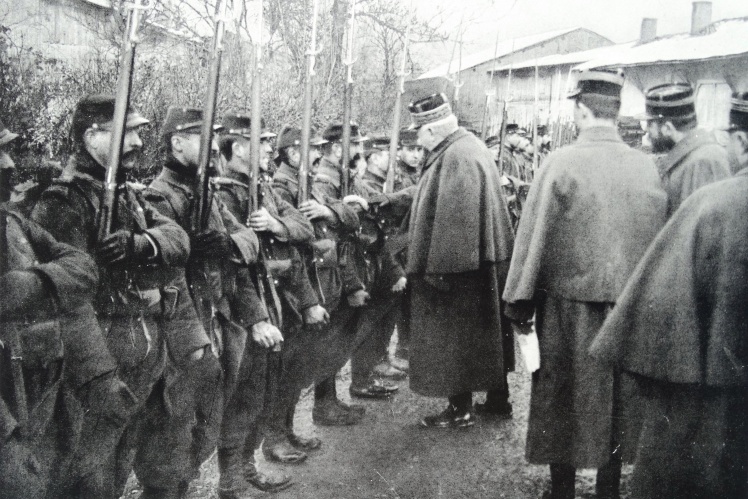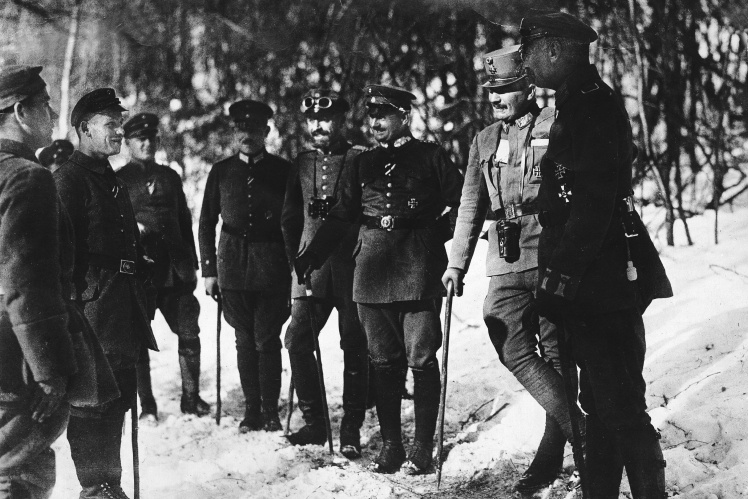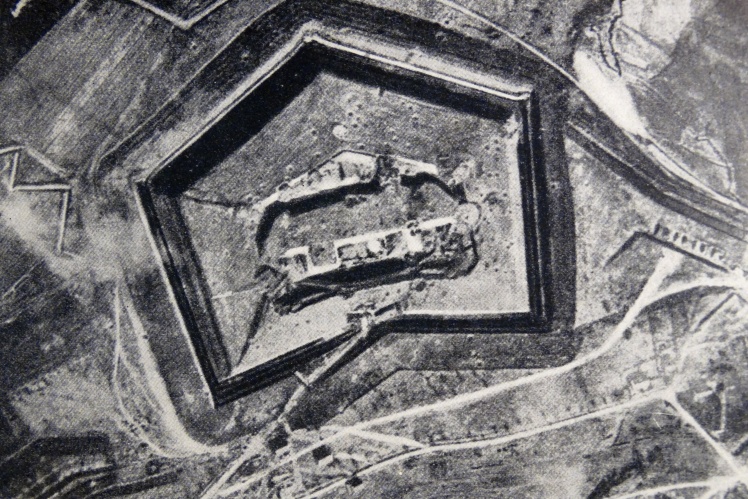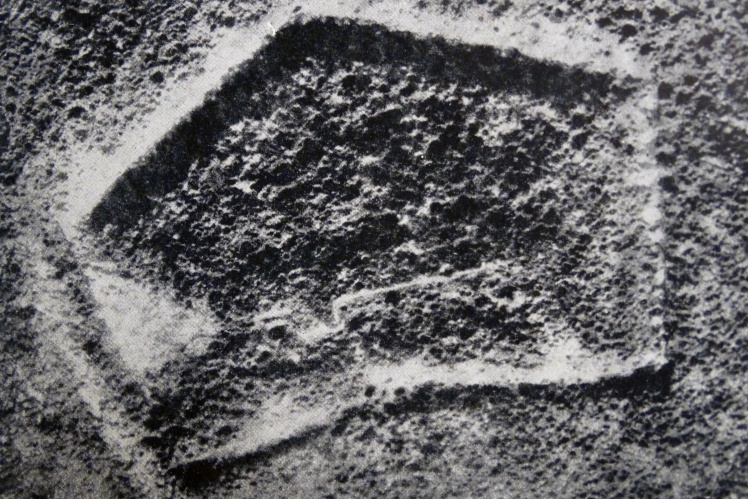In 1914, the German General Staff expect to a quick victory. The plan against the French on the Western Front called for a circling maneuver through Luxemburg and Belgium to attack and capture Paris swiftly. This was to force France to capitulate before Britain could send substantial aid. Next, they [Germans] planned to transfer the troops to the Eastern Front as soon as possible and crush the Russian Empire just as rapidly. The German leadership understood that they would lack economic and human resources for a protracted war. So the entire campaign was planned to be completed in about eight weeks.
At first, everything went according to the Germansʼ plan. During August 1914, they pushed the Franco-British troops deep into France. And on September 5, a battle began between French and German troops on the Marne River, about 40 kilometers from Paris. Then the French commander-in-chief Joseph Joffre took an unusual step — he ordered almost 600 Parisian taxis to quickly send reinforcements to the front. In the end, the French managed to turn the tide of the battle and drive the enemy away from the capital.
German infantry forces attack, August 1914. French reinforcements leave Paris by taxi for the front on the Marne, September 7-8, 1914.
Getty Images / «Babel'»
In 1915, the French already tried to organize a large-scale offensive in the region of Artois and Champagne. But the operation failed and resulted in huge losses. At the end of 1915, the confrontation became mostly positional. The German command feared that the war would drag on. And so it happened. This situation was in favor of the Entente, while Germany had to fight on several fronts.
At the end of 1915, the parties on the Western Front were finally convinced that large-scale offensives were not successful. So they decided to make breakthroughs in narrow sections of the front. Joseph Joffre, who received the title of Generalissimo, planned an attack in the north of France together with the British. By the summer of 1916, when the terrain was supposed to dry out, they expected to regroup the armies and draw up additional reserves.
The Chief of the German General Staff Erich von Falkenhayn planned to act according to a similar strategy, but he was not going to wait until the summer. At the end of 1915, the German-Austrian troops under his leadership defeated the Russians, broke through the Eastern Front and captured Poland, parts of the Baltic States, Ukraine and Belarus. They occupied Serbia and Montenegro in the south. Germany now had the opportunity to transfer more troops to the Western Front.
Joseph Joffre inspects the formation of the military, 1915. Erich von Falkenhayn (second right) inspecting the front line, January 1916.
Getty Images / «Babel'»
Falkenhayn decided to direct his strike at Verdun, an enclave in eastern France that consisted of the fortress city of Verdun and a double ring of over 20 hill forts on both sides of the Meuse River. At the beginning of the World War I, the Germans did not dare to attack Verdun, but simply bypassed it from the north and south. So at the beginning of 1916, the fortified area was a projection of the French defense, which the Germans surrounded on three sides.
Since the Germans did not dare to attack Verdun during the first two years of the war, the French really relaxed. Moreover, in preparation for the Somme offensive at the end of 1915, more than 200 guns and 600 tons of ammunition were removed from the Verdun forts, and the garrison was reduced to a minimum. The Germans planned to take advantage of this.
Map of military campaigns on the Western Front in 1915-1916. The scale of the German offensive at Verdun is indicated by a red line, and the British-French offensive on the Somme — by blue one.
Getty Images / «Babel'»
Falkenhayn also counted on the psychological factor. For France, Verdun was a symbolic city that repeatedly found itself at the epicenter of Franco-German conflicts of the 18th and 19th centuries and was considered the "eastern gate to Paris." So according to Falkenhaynʼs plan, its fall should have dealt a serious moral damage to France.
The Germansʼ strategic plan looked perfect on paper. In order to save face, the French General Staff will be forced to throw all its forces at Verdun and fall into a German trap. Concentrating a large amount of artillery on a commanding salient would simply grind down the French forces until they ran out of reserves and finally lost morale.
"The troops of France will be bleeding to death," wrote Falkenhayn in a memorandum to the German Kaiser Wilhelm II.
Then they [Germans] can sign peace on terms favorable to Germany. And if not, then it is necessary to take advantage of the exhaustion of the French at Verdun, break through the front in another place and capture Paris. Berlin expected that the British, having lost France, would also quickly withdraw from the war, and the Entente would cease to exist.
German 420 mm “Big Bertha” super-heavy howitzer on the Western Front, 1915. Germany managed to build four such howitzers, and all of them took part in the Battle of Verdun.
Getty Images / «Babel'»
The Germans had been preparing for the operation since October 1915. Almost 100 000 soldiers were withdrawn from the front and sent to the interior of the country for special training. They had to explore every wood, ravine, hill and marsh around Verdun in order to successfully storm the French positions. And the German aviation has been conducting detailed aerial reconnaissance of the enemyʼs fortifications for several months. Another approximately 300 000 troops under the command of Kronprinz (Crown Prince) Wilhelm III were to support the offensive from the flanks. At the beginning of the operation, the Germans had a fivefold advantage in the number of troops.
German infantry arriving at a position near Verdun, February 1916.
Getty Images / «Babel'»
The main tactics were as follows: artillery hits [them], and infantry forces acquire [them]. Massive artillery barrage suppresses firing points and destroys enemy fortifications. Then assault troops with light machine guns, mortars and flamethrowers enter the French trenches. In case of success, the main infantry forces follow them, and in case of failure, the artillery takes up the cause again. This happened slowly, but methodically and with insignificant human losses. The plan was carefully worked out in the General Staff together with all the colonels who were to participate in the operation, and even in the presence of the Kaiser himself.
Kaiser Wilhelm II (seated in the foreground) with his generals during the World War I. Erich von Falkenhayn sits second to the right of the Kaiser. Kronprinz Wilhelm stands fourth to the left.
Getty Images / «Babel'»
Generalissimo Joffre did not believe until the last that the Germans would dare to attack Verdun. At the end of January 1916, French intelligence sounded the alarm after a pilot who managed to fly around the German positions near Verdun failed to count the exact number of artillery batteries — there were so many of them. This pilot was lucky. After all, even before the start of the operation, the German aviation seized control in the air. And they [Germans] not only conducted aerial reconnaissance to adjust artillery fire, but also shot down French planes and reconnaissance balloons.
The French launch a reconnaissance balloon during the Battle of Verdun, 1916.
Getty Images / «Babel'»
However, Joffre still considered this a diversionary maneuver and waited for an attack elsewhere. Only at the last moment did he decide to send reinforcements to Verdun. The weather also helped the French. Initially, the Germans planned an attack on February 12, but due to fog, heavy rain and wind, it had to be postponed.
Around seven oʼclock in the morning on February 21, 1916, the Germans began shelling the French positions near Verdun. It lasted more than nine hours with a break for aerial reconnaissance. During this time, the Germans fired almost two million shells. An area about 30 kilometers long came under shelling. The shells reached even the city. But the Germans focused their main fire on the French positions on the right bank of the Meuse River. During the day, the German troops advanced about five kilometers and captured the front line of the French defense.
German heavy howitzers in positions near Verdun, 1916.
Getty Images / «Babel'»
In the following days, everything happened according to a similar scenario: during the day German artillery destroyed the French positions, and in the evening the infantry forces captured them. French commanders organized counterattacks. Sometimes they managed to regain lost positions at the cost of huge losses. But in a few hours, the Germans knocked them out again.
The French counterattack near Verdun, 1916.
Getty Images / «Babel'»
By February 25, the Germans captured most of the French fortifications on the right bank of the Meuse River. The strongest and most important fort of Duomont was captured without firing a single shot by the forces of only one assault company. In a few days, the Germans also captured the remnants of the French garrison in the village of the same name near the fort. Among the prisoners was the wounded 25-year-old Captain Charles de Gaulle, the future hero of the World War II and the president of France. He returned from captivity only after the defeat of Germany in November 1918.
Airphoto of the Fort Duomont before the Battle of Verdun. Airphoto of the Fort Duomont after the Battle of Verdun.
Getty Images / «Babel'»
It would seem that everything was going according to Falkenhaynʼs plan. German troops stood 8 kilometers from Verdun and methodically shelled the city. French troops on the right bank of the Meuse pressed against the river. And the Kronprinzʼs flank reserves have not yet entered the battle. And his father, Kaiser Wilhelm II, had already publicly declared that his troops were about to take "the most important stronghold of our main enemy and bring the war to a triumphant end."
Kaiser Wilhelm II with his son in positions near Verdun, 1916.
Getty Images / «Babel'»
Generalissimo Joffre was losing authority. He was reminded of the unsuccessful counteroffensive in 1915. And after the first successes of the Germans near Verdun, rumors spread in Paris that he ordered the surrender of the city. Under pressure from the political leadership, on the evening of February 25, 1916, Joffre handed over command of the defense of the Verdun district to one of his best generals, Philippe Pétain. He became one of the heroes of France during the World War I and the main traitor during the World War II.
Philippe Pétain at his headquarters, 1916.
Getty Images / «Babel'»
"Nowhere else — on any front and in any battle — nothing like this was known. The Germans tried to create such a "death zone" in which no part could hold out. Clouds of steel, cast iron, shrapnel, and poisonous gases spread over our forests, ravines, trenches, and bunkers, destroying literally everything," Pétain described his first days near Verdun.
However, Pétain began to organize the defense. First of all, he ordered to stop trying to recapture the lost forts and concentrate on the defense of the remaining positions on the right bank of the Meuse. Then he arranged the flow of reinforcements, ammunition and food. The Germans cut or kept under heavy fire the railway lines leading to Verdun. The only quite safe connection with the rear was a dirt road about six meters wide. Pétain forbade anyone but military transport to drive on this road and chartered about six thousand trucks. In the period from February 27 to March 6, 1916, almost 190 000 soldiers and 25 000 tons of military cargoes were delivered to Verdun. Later, the French called this road the "Sacred Way".
French reinforcements arrived at Verdun on the "Sacred Way" at the end of February 1916.
Getty Images / «Babel'»
In the last days of February, the Germans tried to develop success, but again the weather got in their way — it snowed heavily. In addition, they did the dirty on themselves: massive shelling turned the area of the offensive into a solid swamp, in which the infantry and heavy long-range guns got bogged down. At the front, German troops were forced to attack positions without significant artillery support. Instead, Pétain placed his own light guns on the flanks. The attacks of the German infantry forces turned into a kind of "meat assaults".
German infantry forces attack near Verdun, 1916.
Getty Images / «Babel'»
At the beginning of March 1916, Falkenhain brought the flank reserves of Kronprinz Wilhelm into battle. But if (according to the previous plan) they were supposed to finish off the exhausted and almost defeated French, now they were opposed by fresh fighters. Flank attacks lasted almost a month, until the beginning of April. The fiercest battle took place on April 9, for the commanding Height 304, which is on the left bank of the Meuse (north of Verdun). It entered French and German history under the name "Dead Manʼs Hill". The French repulsed the attack.
"The ninth of April is the day of glory for your weapons and courage. Fierce assaults by Kronprinzʼs soldiers failed. Infantry, artillery, sappers, aviators — you all gave them a good fight," Pétain told his troops.
Germans attack "Dead Manʼs Hill", March-April 1916.
Getty Images / «Babel'»
This was the last attempt of the Germans to follow the original plan. By that time, Falkenhayn had lost more than 80 000 soldiers killed and wounded. And then he was considering canceling the operation. But now the psychological factor played against the Germans — they had to admit the failure of the operation, which they had prepared so long and carefully, which meant for them to be finally ashamed. They had to adjust the plans and connect the press. In the German newspapers, the operation was not called the "capture" but the "siege" of Verdun, in order to draw the most capable French troops away from other areas of the front.
At first glance, it really worked — the French had to establish a permanent rotation. In total, about 70 divisions took part in this battle (that is, every second or third French soldier). However, such tactics cost the Germans dearly. Initially, approximately eight divisions were to participate in the operation. Then their number was increased to 13, and eventually — to 50.
Now the Battle of Verdun was mostly a trench battle. However, both sides sometimes staged local offensives, which had no strategic benefit, but were accompanied by significant losses.
Newsreel of trench warfare during the Battle of Verdun, 1916.
Getty Images / «Babel'»
For example, at the beginning of May, after 36 hours of artillery preparation and hand-to-hand fight, the Germans finally captured "Dead Manʼs Hill". But they were so exhausted that they could not develop success. In late June, German artillery fired more than 100 000 gas shells at French positions on the right bank of the Meuse, overwhelming the French emplacements and killing more than 1 600 soldiers. The German infantry forces reached Fort Souville, which is 5 kilometers from Verdun, but found themselves under heavy artillery fire from the flanks and they retreated with losses. This was the closest distance the Germans managed to approach the city during the entire time of the Verdun operation.
A horse-drawn carriage passes among the destroyed buildings of Verdun after the shelling, 1916. Buildings destroyed by shelling in Verdun on the banks of the Meuse River, 1916.
Getty Images / «Babel'»
General Robert Nivelle, who replaced Pétain as head of the Verdun sector, believed that the best form of defense was attack. Throughout May and June 1916, he organized local offensives, but with variable success. One day the French could rush into the German positions and capture up to five thousand prisoners, and the next day — retreat with twice as many losses.
The main achievement of the French at Verdun in the early summer of 1916 was that they seized dominance in the air, in particular, thanks to the Lafayette squadron. Air tactics have also changed. Instead of single pilots, entire groups took to the sky — reconnaissance planes under the cover of fighter jets. Groups of 6-12 aircraft from each side took part in air battles.
Air battle over Verdun, 1916.
Getty Images / «Babel'»
With the beginning of the French-British offensive on the Somme in July 1916, the Germans were forced to transfer their forces from Verdun. On the Eastern Front, the Russian army recovered and staged the Brusilov offensive, so reinforcements had to be sent there as well. In the end, at the end of August, Falkenhayn was removed from the post of Chief of the German General Staff. He was replaced by Paul von Hindenburg, the future president of the post-war Weimar Republic.
"Verdun was becoming a great wound that sapped our strength," thatʼs how he described his first impressions of what he saw on the battlefield. At that time, the losses of each of the parties were approaching 300 000.
However, the tactics of the Battle of Verdun did not change much — local attacks and counterattacks, capture and rapid loss of positions. One of the most striking examples is Fort Fleury, which passed from hands to hands 16 times from the end of June to the middle of August 1916.
The Germans capture one of the French fortifications near Verdun, August 1916.
Getty Images / «Babel'»
At the end of October, General Nivelle received reinforcements and decided to organize a large-scale French offensive for the first time during the Battle of Verdun. He acted in much the same way as the Germans in the first days of the operation: massive artillery training, and then — an infantry attack with assault units at the forefront. Like the Germans, the French had to advance on terrain that had turned into a mixture of mud, ash, ruins, and dead bodies. Huge craters from shells were filled with rainwater, and soldiers sometimes drowned in them.
Newsreel of French artillery, infantry forces attacks and positions retaken from the Germans, 1916.
Getty Images / «Babel'»
By mid-December 1916, the French had recaptured all the lost positions. In a final attack on December 18, the French broke through the German defenses and captured approximately 100 guns and over 11 000 prisoners. The next day, December 19, the fighting finally stopped. Thus ended the Battle of Verdun, which lasted 302 days. The parties found themselves in almost the same positions from which everything began in February, but it cost them about a million dead and wounded. Because of this, the battle went down in history as the "Verdun Meat Grinder".
Many soldiers who survived Verdun were psychologically traumatized for the rest of their lives.
"One of the patients who received a concussion at Verdun had to be placed in a psychiatric clinic. He is in a state of severe disorientation and delirium. He does not remember anything about combat operations. His last memories are the events that happened ten days before his regiment was transferred to the Meuse," doctors described one of the cases.
In essence, the Battle of Verdun did not bring any significant tactical or strategic result to either side. The Germans could neither take Verdun, nor exhaust the French forces and disrupt the offensive on another part of the front, nor hold the captured positions. The French also failed to distract the considerable forces of the Germans in order to defeat them on the Somme together with the British.
Map of the Battle of Verdun from February to December 1916. Positions and directions of French attacks are shown by red lines, and Germans — in black ones.
Getty Images / «Babel'»
Verdun turned into a battle for prestige both for the French and later for the Germans. And failures cost both German and French commanders-in-chief their positions. Erich von Falkenhayn was transferred to Romania. On December 26, 1916, Joseph Joffre was the first in the history of the Third French Republic to receive the rank of marshal, but on the same day he resigned under political pressure. Robert Nivelle, who became famous during the final stage of the Battle of Verdun, also did not last long in office. At the end of April 1917, he planned another "decisive battle" in the north of France, but lost almost 200 thousand soldiers in 48 hours. In May, Philippe Pétain replaced him as commander-in-chief.
Verdun remained in ruins for a long time. And several surrounding towns and villages were never rebuilt. In 1932, a memorial and a huge necropolis were created near Verdun, where almost a hundred thousand French and German soldiers were buried. About the same number remained on the former battlefield.
A French soldierʼs grave on the Verdun battlefield, marked with a rifle and helmet, 1916.
Getty Images / «Babel'»
Donate to the Armed Forces of Ukraine so that no Ukrainian city becomes a "new Verdun" again. And if possible, support independent journalism: 🔸 in hryvnia , 🔸 Buy Me a Coffee , 🔸 Patreon , 🔸 PayPal: [email protected].








